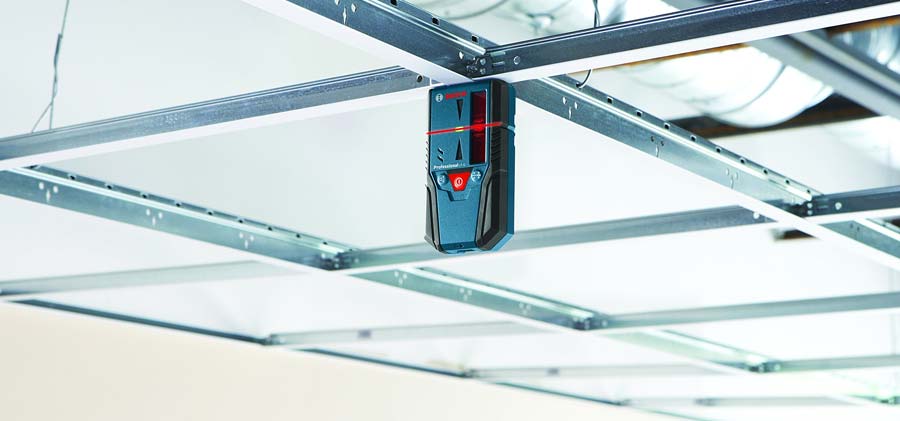Garage door sensors play a critical role in keeping your home safe by preventing the door from closing on people, pets, or objects. Over time, these sensors can experience issues that affect their performance — from misalignment to obstruction or power failure.
In this guide, we’ll walk you through the most common garage door sensor problems and how to fix them. Whether it’s a blocked sensor or one that’s out of alignment, knowing how to spot the issue early can help you avoid bigger repairs later.

How Garage Door Sensors Function
Garage door sensors work like a watchful pair of eyes. Typically, they are installed on both sides of the garage door, close to the ground.
These sensors emit infrared beams that detect any obstruction in the path of the door to ensure safety of your children and pets.
It’s crucial to keep these sensors in working order. Failing sensors can lead to several safety risks and security concerns.
Common Garage Door Sensor Problems & Fixes
Several issues can arise with garage door sensors. Here are some common problems and their solutions:
1. Misalignment of Sensors
One of the most frequent issues is sensor misalignment. If the sensors are not aligned correctly, the infrared beams may not intersect, causing the garage door to malfunction. This can result in the door not closing or reversing unexpectedly.
How To Fix: To address this, check the alignment of both sensors. Make sure they are pointing directly at each other. If needed, adjust them slightly until they align perfectly. A simple adjustment can often restore proper function.
2. Obstructions in the Sensor Path
Dust, dirt, and debris can obstruct the infrared beam. When this happens, your garage door won’t close. Regular maintenance is essential to keep the sensors clear.
How To Fix Blocked Sensor: Clean the sensor lenses regularly. Use a soft cloth and a mild cleaner to gently wipe away any buildup. This will help ensure that the sensors can detect obstructions accurately.
3. Power Issues
If your sensors are not receiving power, they won’t function correctly. This can lead to issues with opening and closing your garage door.
Solution: Check the sensor connections for any loose or damaged wiring. Replacing faulty wiring or securing the connections can often fix the problem. If you continue to experience issues, you may need to consult a professional for a more in-depth garage door sensor repair.
4. Outdated and Old Sensors
Older sensors might malfunction due to wear and tear. If you have outdated sensors, consider replacing them with newer models that offer enhanced features and reliability. High-sensitivity sensors, for instance, are great for homes with pets or children.
How to Perform a Garage Door Sensor Safety Check
To ensure your garage door sensors are functioning properly, it’s crucial to perform a regular sensor safety check. Here’s how to do it:
- Close your garage door fully.
- Use a piece of paper or your hand.
- As the door begins to close, place the object in front of the sensors.
If the sensors are working well, the door should reverse its motion immediately upon detecting the obstruction. If it doesn’t, you likely have an issue that needs repair.
Garage Door Sensor Maintenance Tips
Regular maintenance can extend the life of your garage door sensors and prevent issues from occurring. Here are some tips:
- Keep Them Clean: As mentioned, regularly clean the sensor lenses to remove dirt and cobwebs.
- Check for Alignment: Periodically check the alignment to ensure they are still correctly positioned.
- Inspect Wiring: Occasionally inspect the wiring for signs of wear and tear.
By performing these basic maintenance tasks, you can minimize the need for extensive repairs.

When to Call a Professional
Sometimes, DIY methods may not solve the problem. If you continue to experience issues, particularly with complicated infrared sensor issues, it may be time to consult a professional. A technician can diagnose the problem more accurately and carry out necessary repairs.
When and Why to Upgrade Your Garage Door Sensors
If your current sensors are frequently causing problems, consider upgrading. Newer models come with features like self-diagnosing capabilities, which help identify issues before they escalate. Wireless sensors also offer greater flexibility in installation and reduce clutter.
Legal Considerations
In many areas, regulations require that garage doors have safety sensors installed. These legal requirements help protect families from potential hazards. It’s important to ensure that your garage door complies with local safety codes.
Conclusion
Understanding garage door sensor problems is essential for keeping your garage door safe and functional. Regular checks for sensor alignment and blocked sensor fix can prevent many common issues. You should check the sensors regularly to ensure safety and security.
If you find that your garage door won’t close, or you experience persistent sensor issues, don’t hesitate to reach out for professional assistance. Regular maintenance can save you time and money in the long run.
FAQs
Check the garage door sensors first. Ensure they are aligned and free from dirt or obstructions. If the problem persists, you may need professional help.
To test the sensors, close the garage door and place an object, like a piece of paper or your hand, in front of the sensors. The door should reverse immediately if the sensors are working correctly.
It’s a good idea to clean the sensors at least once a month. Regular cleaning helps prevent dust and debris from blocking the infrared beams.


